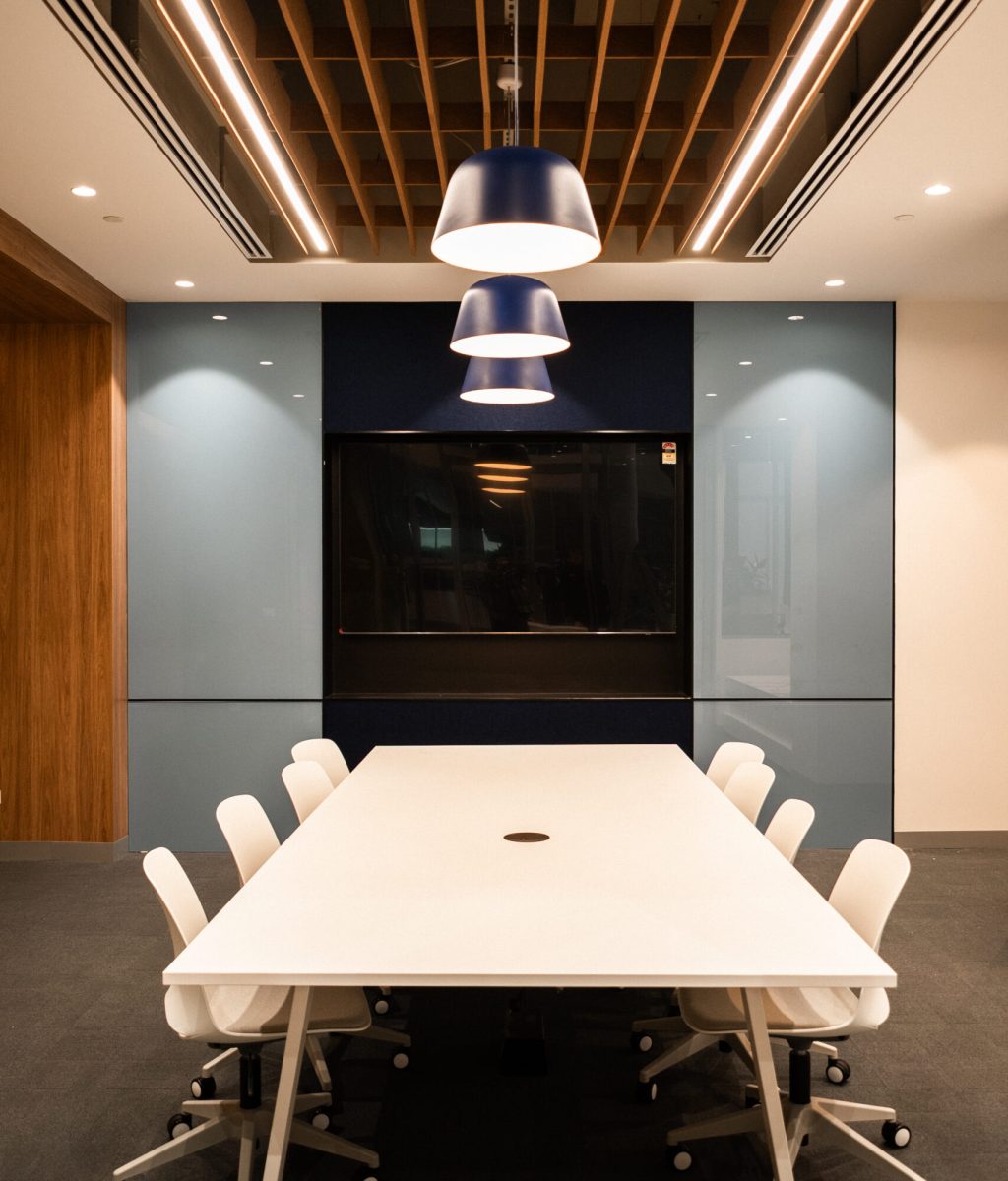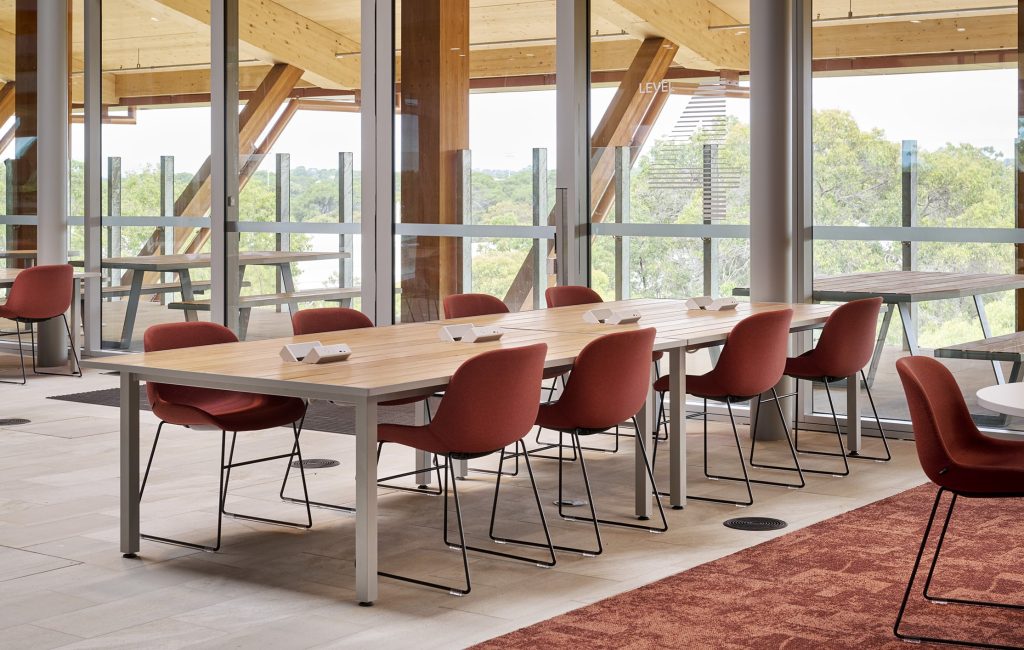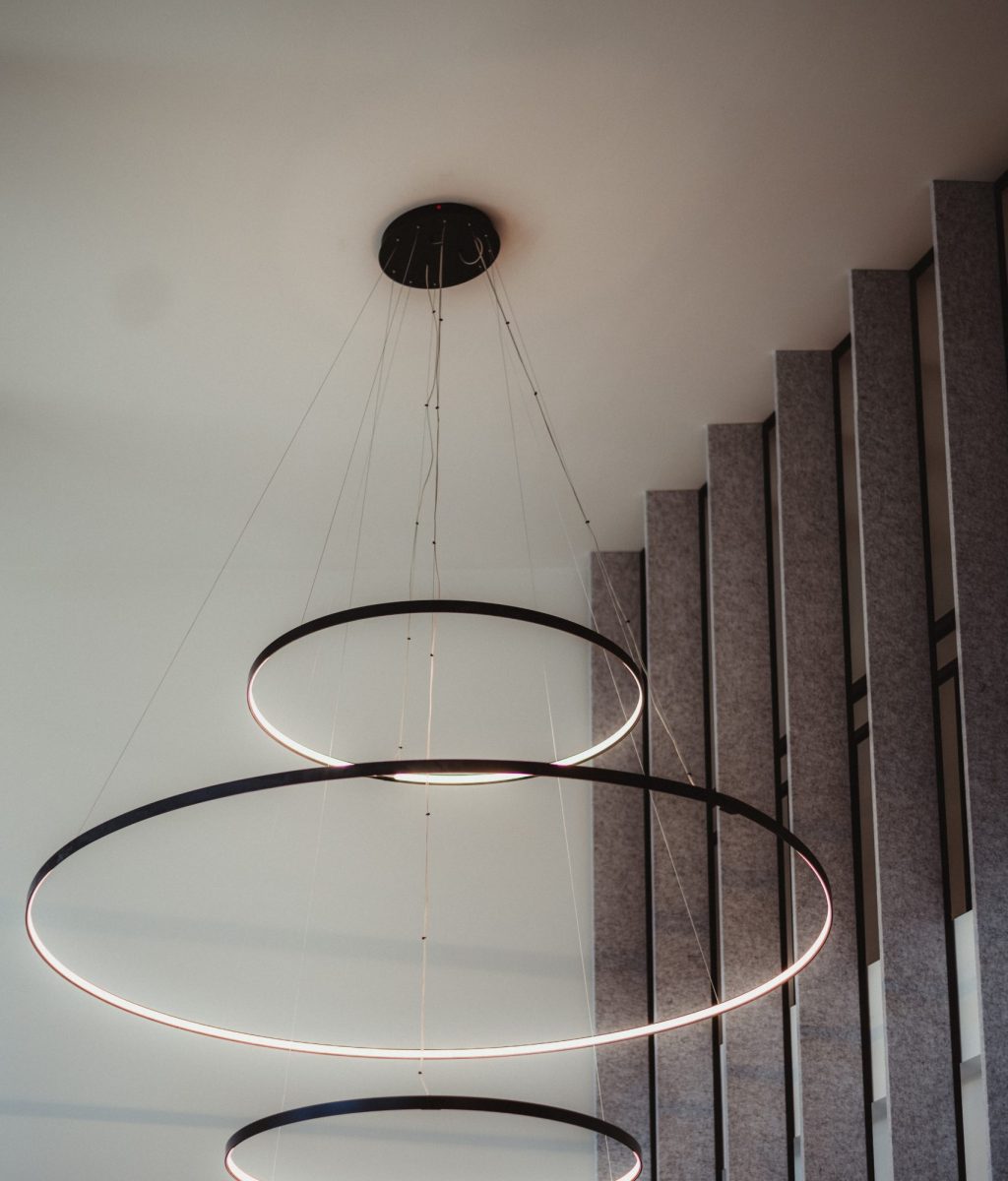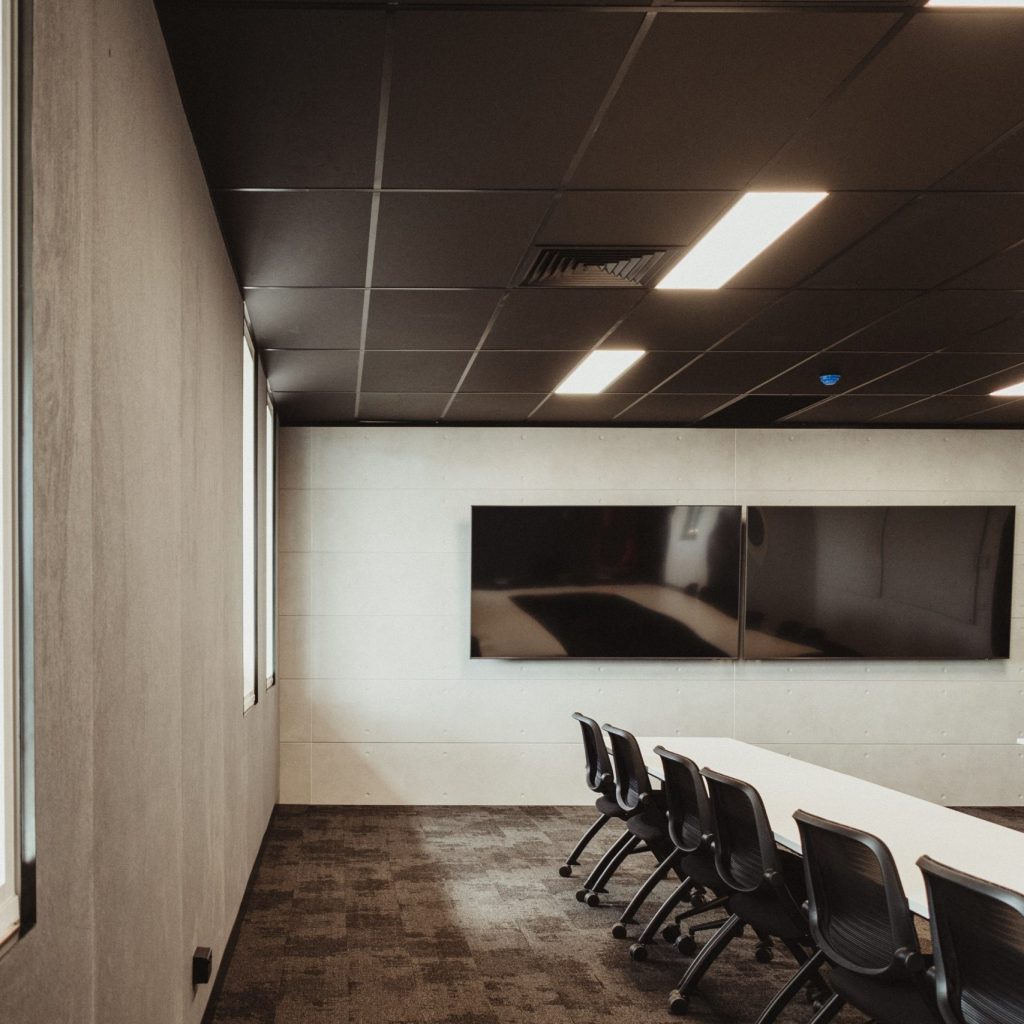What really drives the cost of an office fitout?
A deeper dive for Australian workplace leaders
If you’ve read our Fitout Cost Guide, you’ll know that typical office fitouts in Australia range from ~$1,000–$3,000+ per sqm depending on specification and complexity.
We’ve broken down the main factors that impact costs, including size and layout, location, scope of works, materials and design complexity, so you can see what really drives budgets up or down and where smart choices can make the biggest difference.

1) Office size & layout
Why it matters: Your floorplate and planning ratios set the cadence for everything that follows. If you’re looking to minimise costs, spend time at the start considering how many rooms, doors, glazed fronts, power/data points, mechanical zones and fire services you’ll need.
Cost drivers that push up:
- High partition ratios (lots of enclosed offices, focus rooms and meeting rooms) increase walls, doors, glazing, acoustic treatments and above-ceiling services.
- Irregular or deep floorplates typically require more HVAC zoning and supplementary air to meet comfort and code.
- High-density planning (tight workstation spacing) raises the count of outlets, circuits, floor boxes and Wi‑Fi/AP density, plus may require base-building capacity checks.
- Premium front-of-house (reception, client suites) often introduces bespoke stone, feature ceilings, AV, and security.
Cost drivers that pull down:
- Open, modular planning (larger collaboration zones, fewer hard-walled rooms) reduces partitions and door hardware.
- Design-to-grid (standard room sizes aligned to sprinkler/light grids) minimises rework to services.
- Re‑use of compliant existing elements such as ceilings, lighting, partitions can trim both cost and program (more on compliance below).
Pro tip from our delivery teams: Early test fit planning to settle adjacencies and right size rooms is one of the highest ROI steps you can take; it prevents late-stage layout churn that ripples expensively through every trade. CBRE’s latest global analysis reinforces that space strategy choices (hybrid settings, tech-enabled rooms) are reshaping cost profiles; pressure-test the brief before you price.
2) Geographic location
Why it matters: Labour rates, site conditions and supply chains vary meaningfully between CBDs and regional centres, and even between buildings within the same city.
Cost drivers that push up:
- CBD access constraints (loading dock curfews, lift bookings, after-hours work) add preliminaries and overtime.
- Remote/regional mobilisation (accommodation, travel, limited subcontractor pools) increases prelims and risk allowances.
- Hot markets with tight trade capacity lift margins and elongate lead times; macro factors like currency and tariffs also flow into fitout pricing (for imported HVAC, specialist equipment and finishes).
Cost drivers that pull down:
- Suburban assets with easy access, fewer work-hour restrictions and plentiful parking generally reduce preliminaries.
- Local sourcing and alternative specifications (where feasible) can sidestep currency exposure and long-lead imports.

RLB’s 2025 market update highlights how a weaker AUD and shifting international tariffs are elevating input costs—particularly for mechanical systems, steel and high tech components—while labour availability continues to influence pricing volatility. Build these realities into your budget and schedule.
3) Scope of works (and compliance)
Why it matters: Scope is the single biggest swing factor. Two 2,000 sqm fitouts can price very differently depending on what you inherit and how much you change.
The starting point of what you inherit:
- Cold/grey shell: essentially a blank box lacking ceilings, lighting, HVAC distribution and often amenities this has the highest tenant scope.
- Warm shell: includes basic services and finishes (e.g., ceilings, lighting, HVAC distribution) and generally comes with a lower tenant scope to reach occupancy.
Understanding this baseline clarifies who pays for what and why your budget looks the way it does.
Inside the tenant scope and what typically swings cost:
- Demolition & make‑good: Removing legacy partitions, services and finishes in live buildings can trigger after-hours work and extra protection measures. (End‑of‑lease make‑good obligations also affect the whole‑of‑life cost of your fitout and are worth understanding up front.)
- Services upgrades: Density or specialist uses (studios, labs, wellness rooms) may require supplementary AC, additional outside air, electrical capacity upgrades, new fire zones, or plumbing to new wet areas.
- Technology & security: AV‑rich collaboration spaces, room booking, access control and sensors materially change cabling, containment and commissioning allowances. This is an area growing faster than base build costs in many markets.
- Furniture, fixtures & equipment (FF&E): Quantity and quality of workstations, task chairs, soft seating and joinery can swing totals by hundreds of dollars per sqm.

Compliance, which is often invisible and generally always non‑negotiable:
Changes to layout can trigger NCC requirements for egress (Part D1). Think exit travel distances, exit door hardware, corridor widths, as well as fire resistance (Part C2) fire‑rated enclosures, fire‑stopping, and materials with compliant hazard properties. These are essential safety provisions that can add cost even when finishes are modest.
Sustainability & certifications:
Pursuing Green Star – Interiors or similar targets can introduce additional design coordination, documentation, low‑VOC/acoustic material selections, and certification fees (GBCA publishes the current fee schedule). Many clients choose this path for brand, wellbeing and ESG outcomes; just allow for it early in the budget.
4) Material selection
Why it matters: Finishes are the most visible expression of your brand, and one of the easiest levers to control budget.
Cost drivers that push up:
- Premium, bespoke or imported finishes (natural stone, solid timber, custom metalwork), complex curved joinery, integrated lighting and feature ceilings.
- High acoustic performance (dense partitions, specialty glazing, acoustic ceilings and wall systems) can be crucial for focus and privacy but should be targeted to where it matters most.
Cost drivers that pull down:
- Tiered material strategies: invest in high‑impact zones ( such as the front‑of‑house, major collaboration rooms), and specify durable mid‑range finishes for back‑of‑house.
- Local alternatives with proven lead times reduce freight risk and currency exposure.


5) Design complexity
Why it matters: Complexity compounds cost through time, coordination and risk, usually even before you buy a single tile.
Cost drivers that push up:
- Non‑standard geometry (curved walls, sloped ceilings, bespoke stairs) increases design hours, site setting‑out and fabrication time; feature stairs can also trigger fire engineering and smoke control considerations.
- High integration (lighting integrated into joinery, concealed air grilles, flush thresholds) requires tight tolerances across trades.
- One‑off details: Unique items (sculptural reception desks, custom metal screens) attract prototype/engineering effort.
Cost drivers that pull down:
- Kits‑of‑parts: repeatable room modules and joinery families enable efficient procurement and install.
- Performance‑led specs: define acoustic, durability and maintenance targets, then let the market propose the most cost‑effective way to achieve them.
CBRE’s recent analysis of fitout trends notes that technology-rich hybrid workplaces and sustainability features are the big re shapers of scope, and therefore cost, today. Marry ambition with standardisation wherever you can.
Frequently overlooked line items
(that catch many budgets out)
- Approvals & professional fees: planning (where applicable), building permits/certifier, fire engineering/performance solutions, acoustic/ESD/AV/IT design, and commissioning/soft‑landings support. These are essential to a safe, compliant, high‑performing workplace. (NCC sets the minimum performance bar for structure, fire safety, access and egress, health and amenity.)
- Live‑environment premiums: working around an occupied tenancy (yours or others) can add after‑hours and protection costs.
- Logistics & preliminaries: site amenities, hoardings, temporary services, waste management and lift time add up, especially in constrained CBD towers.
- End‑of‑lease make‑good: plan this alongside your new fitout; the RICS “Make Good Australia” guidance underscores why clarity here reduces disputes and surprises.
How Workspace 360 helps you control the levers
- Early Contractor Involvement (ECI): We benchmark options before they hit drawings—testing partition ratios, services strategies and specification tiers so you see the cost/benefit clearly.
- Design-to‑budget: Our integrated interior architecture and documentation teams align every package (partitions, services, joinery, AV, FF&E) to an agreed cost plan and procurement strategy.
- Compliance-first design: We resolve NCC pathways early (egress, fire resistance, accessibility), avoiding late redesigns that burn time and money.
- Market‑smart procurement: We leverage current market intel and supply chains to mitigate currency/lead‑time risk, especially important where global volatility is peaking.
- Transparent pricing: Itemised proposals and optionality (good/better/best) keep you in control of where to invest and where to economise.
A simple playbook to get the number right (and keep it there)

- Start with the right baseline: Confirm your tenancy condition (cold shell vs warm shell) and landlord works. This defines the true scope for your budget.
- Lock the plan: Use test‑fits to decide room counts and sizes early; it prevents cascading service changes later.
- Target performance, not products: Specify acoustic/durability outcomes; let competitive tenders find efficient solutions.
- Sequence sustainability: If you’re aiming for Green Star – Interiors, we’ll integrate criteria and certification fees at concept stage to avoid rework.
- Model risk properly: Carry contingency (typically 10–15% at concept) and consider escalation/FX where relevant. Macro settings (currency, tariffs) are real drivers in 2025.
Bringing it together
Our Fitout Cost Guide provides the per‑sqm context; the five levers above explain why two similar‑sized projects can price miles apart—and, more importantly, where you can steer the outcome. If you want a budget that reflects your strategy (not just your square metres), we’d love to help.
Let’s talk about your project.
We can run a 45‑minute cost and scope workshop with your stakeholders to set a pragmatic budget, timeline and procurement plan aligned to your goals.
Workspace 360: Design, documentation, permits and delivery you can rely on.
